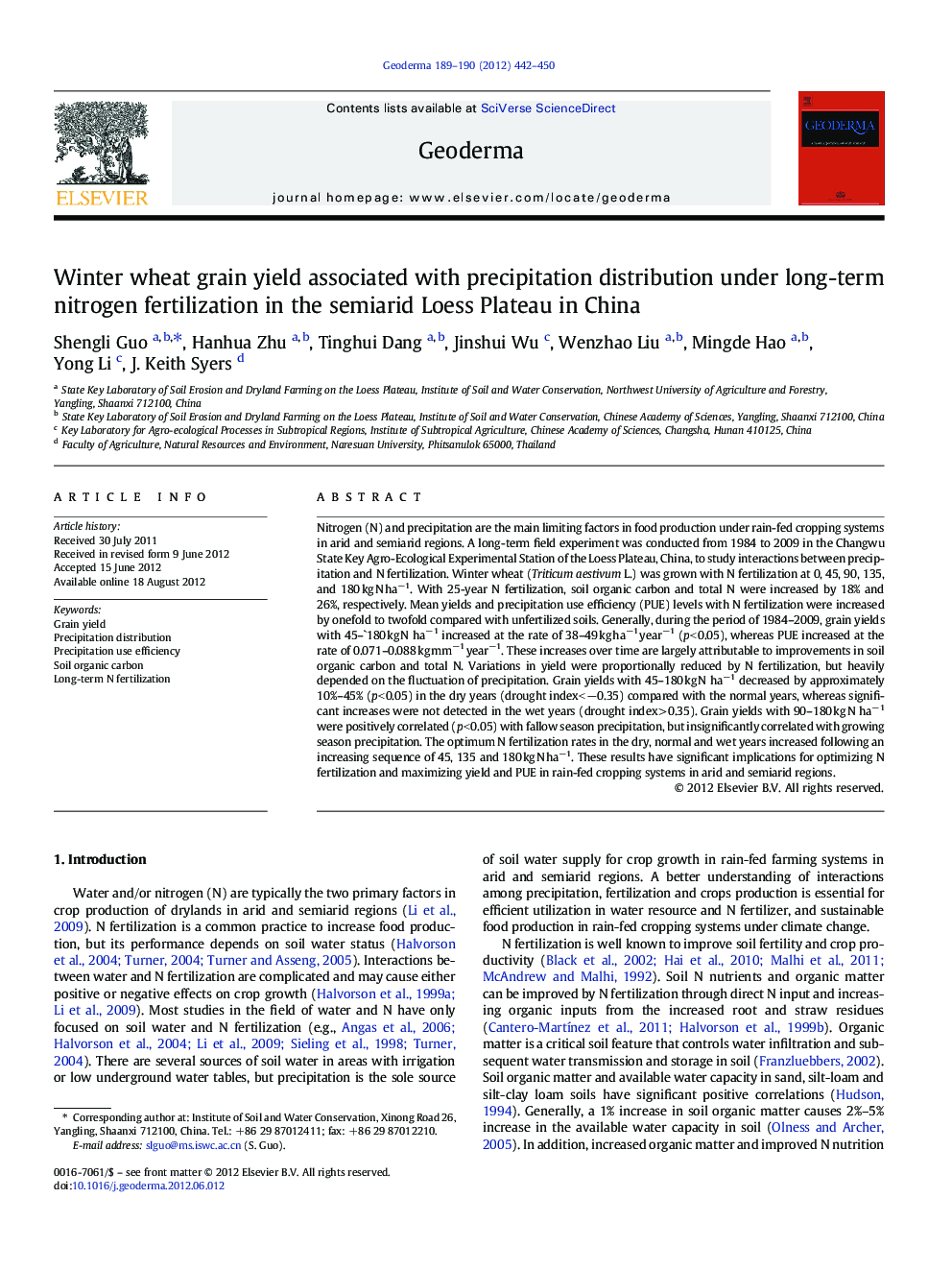| Article ID | Journal | Published Year | Pages | File Type |
|---|---|---|---|---|
| 4573618 | Geoderma | 2012 | 9 Pages |
Nitrogen (N) and precipitation are the main limiting factors in food production under rain-fed cropping systems in arid and semiarid regions. A long-term field experiment was conducted from 1984 to 2009 in the Changwu State Key Agro-Ecological Experimental Station of the Loess Plateau, China, to study interactions between precipitation and N fertilization. Winter wheat (Triticum aestivum L.) was grown with N fertilization at 0, 45, 90, 135, and 180 kg N ha− 1. With 25-year N fertilization, soil organic carbon and total N were increased by 18% and 26%, respectively. Mean yields and precipitation use efficiency (PUE) levels with N fertilization were increased by onefold to twofold compared with unfertilized soils. Generally, during the period of 1984–2009, grain yields with 45–`180 kg N ha− 1 increased at the rate of 38–49 kg ha− 1 year− 1 (p < 0.05), whereas PUE increased at the rate of 0.071–0.088 kg mm− 1 year− 1. These increases over time are largely attributable to improvements in soil organic carbon and total N. Variations in yield were proportionally reduced by N fertilization, but heavily depended on the fluctuation of precipitation. Grain yields with 45–180 kg N ha− 1 decreased by approximately 10%–45% (p < 0.05) in the dry years (drought index < − 0.35) compared with the normal years, whereas significant increases were not detected in the wet years (drought index > 0.35). Grain yields with 90–180 kg N ha− 1 were positively correlated (p < 0.05) with fallow season precipitation, but insignificantly correlated with growing season precipitation. The optimum N fertilization rates in the dry, normal and wet years increased following an increasing sequence of 45, 135 and 180 kg N ha− 1. These results have significant implications for optimizing N fertilization and maximizing yield and PUE in rain-fed cropping systems in arid and semiarid regions.
► With 45–180 kg N ha–1, yield increased at 38–49 kg ha− 1 year− 1. ► Precipitation use efficiency (PUE) increased at 0.071–0.088 kg mm− 1 year− 1. ► Carbon accumulation was positively correlated with yield and PUE changes. ► Yield was positively correlated with fallow season precipitation.
